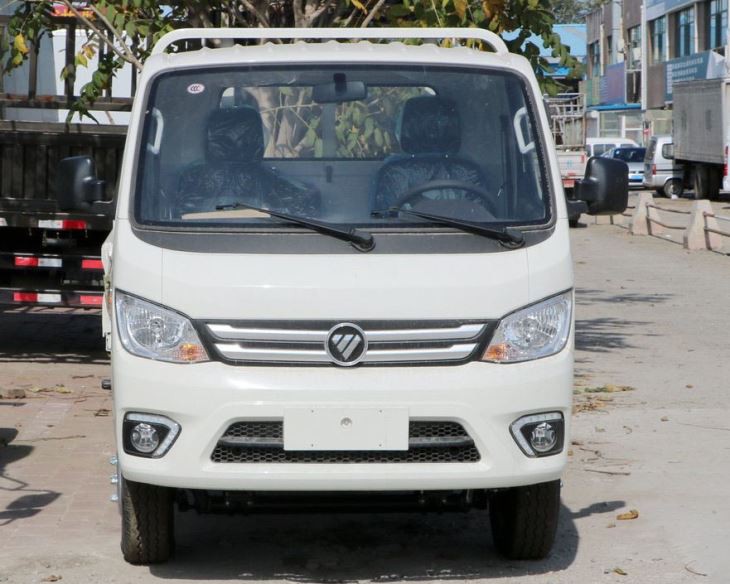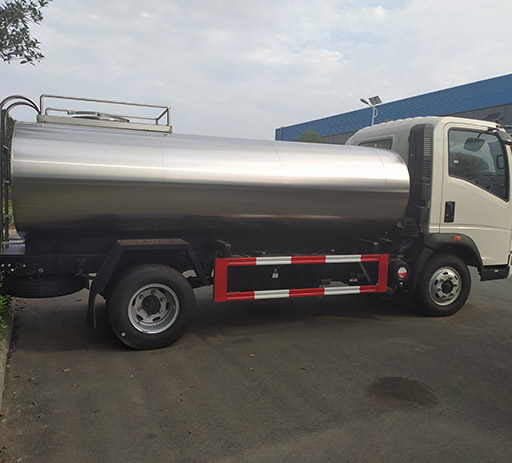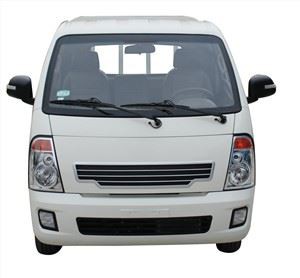Understanding Front End Loader Trucks: A Comprehensive Guide

Introduction

Front end loader trucks are versatile machines commonly used in construction, agriculture, and industrial applications. These heavy-duty vehicles play a crucial role in material handling, excavation, and loading tasks, combining both power and efficiency. In this comprehensive guide, we will explore various aspects of front end loader trucks, including their types, features, benefits, operating tips, and maintenance practices.
What is a Front End Loader Truck?
A front end loader truck, also known as a loader or wheel loader, is a type of earth-moving machine designed to lift and load materials. It typically features a large bucket mounted on the front, which can be raised and lowered to scoop up materials such as dirt, gravel, or debris. These trucks are equipped with wheels or tracks that allow for mobility across various terrains.
History of Front End Loader Trucks
The evolution of front end loader trucks can be traced back to the early 20th century. The first loaders were often horse-drawn or operated manually. However, with advancements in technology, hydraulic systems were introduced, revolutionizing their operation. Today’s front end loaders are powerful, efficient, and equipped with various attachments for specialized tasks.
Types of Front End Loader Trucks
Front end loader trucks come in various models, each designed for specific applications. Understanding the different types can help you choose the right loader for your needs.
1. Wheel Loaders
Wheel loaders are the most common type of front end loader trucks. They feature large wheels, making them suitable for transportation over paved surfaces. They are often used in construction sites, quarries, and landscaping projects.
2. Track Loaders
Track loaders are equipped with tracks instead of wheels, providing better traction and stability on uneven or soft terrain. These loaders excel in applications requiring off-road capabilities, such as forestry and excavation.
3. Compact Loaders
Compact loaders are smaller in size, making them ideal for tight spaces where larger loaders cannot operate efficiently. They are commonly used in urban construction, landscaping, and small-scale farming.
4. Skid Steer Loaders
Skid steer loaders are maneuverable machines with a unique steering mechanism. They are highly versatile and can be fitted with various attachments, making them suitable for multiple tasks, including digging, grading, and lifting.
5. Telehandlers
Telehandlers, or telescopic handlers, are similar to front end loaders but have an extending boom that can lift materials to greater heights. They are used in construction and agriculture for loading and unloading materials from high places.
Key Features of Front End Loader Trucks
When selecting a front end loader truck, it is essential to consider its features to ensure it meets your operational requirements.
1. Bucket Capacity
The bucket capacity of a loader determines how much material it can lift in a single scoop. Typical capacities range from 1 cubic yard to over 6 cubic yards, depending on the machine size and type.

2. Engine Power
Engine power is measured in horsepower (HP) and affects the loader’s performance. A more powerful engine enables better lifting and loading capabilities while maintaining efficiency even under heavy loads.
3. Hydraulic System

Front end loaders use hydraulic systems to power the lifting and dumping actions. Advanced hydraulic systems provide better responsiveness and control over the machine, improving productivity.
4. Tires and Suspension
The type of tires and the suspension system are crucial for stability and traction. Loaders with all-terrain tires are better suited for rough environments, while those with improved suspension provide a smoother ride and better load retention.
5. Operator Comfort and Controls
Features that enhance operator comfort, such as adjustable seating, climate control, and intuitive controls, significantly impact productivity. Operators can work longer hours with reduced fatigue.
Benefits of Using Front End Loader Trucks
Front end loaders offer numerous advantages, making them a valuable investment for many industries.
1. Enhanced Efficiency
With powerful engines and hydraulic systems, front end loaders can complete loading and material handling tasks quickly, resulting in increased productivity on job sites.
2. Versatility
These machines can be fitted with various attachments (buckets, forks, and grapples) for different applications, making them suitable for construction, agriculture, and landscaping.
3. Improved Safety
Modern loaders are designed with safety features such as seat belts, ROPS (Roll Over Protection Structure), and visibility enhancements to protect operators and bystanders on-site.
4. Cost-Effectiveness
Investing in a front end loader can lead to long-term cost savings. By reducing manual labor and improving material handling efficiency, businesses can achieve better profitability.
5. Durability
Front end loaders are built to withstand harsh environments and heavy usage. Proper maintenance can prolong their lifespan, making them a reliable choice for any operation.
Operating a Front End Loader Truck: Practical Tips
Operating a front end loader requires skill and knowledge to ensure maximum efficiency and safety.
1. Pre-Operation Checks
Before operating a front end loader, conduct a thorough inspection. Check fluid levels, tire pressure, and the condition of hydraulic hoses and connections.
2. Proper Loading Techniques
When loading materials, approach the pile slowly, position the bucket at the right angle, and scoop with a smooth motion to avoid spillage.
3. Safe Travel Practices
Drive at a moderate speed, especially on uneven terrain. Ensure that the bucket is lowered to improve stability and visibility while transporting loads.
4. Skill Development
Consider taking professional training courses to enhance your loader operating skills. Online tutorials and simulator programs can also be beneficial for new operators.
Load Management Techniques
Proper load distribution is critical. Avoid overloading the bucket, as it can affect stability and increase the risk of tipping over. Be mindful of the machine’s load capacity.
Maintenance Tips for Front End Loader Trucks
Regular maintenance is key to extending the life of your front end loader. Here are essential maintenance practices:
1. Routine Inspections
Conduct daily pre-operation inspections to identify potential issues. Look for leaks, strange noises, and any abnormal wear on components.
2. Lubrication
Ensure that all moving parts, especially pivots and joints, are adequately lubricated. Regular lubrication prevents wear and tear and reduces maintenance costs.
3. Fluid Levels
Check engine oil, hydraulic fluid, and coolant levels regularly. Maintaining the correct fluid levels is essential for optimum machine performance.
4. Filter Changes
Replace air and hydraulic filters according to the manufacturer’s recommendations to keep your loader running efficiently and to avoid costly repairs.
5. Tire Maintenance
Inspect tires for wear and proper inflation. Uneven tire wear can indicate alignment issues, while under-inflated tires can reduce fuel efficiency and handling.
Common Applications of Front End Loader Trucks
Front end loaders are used across various industries. Understanding their applications can help you leverage their capabilities effectively.
1. Construction Sites
Front end loaders are essential in construction for moving materials, removing debris, and grading sites. They help in preparing foundations and landscaping.
2. Agricultural Operations
In agriculture, loaders assist in loading and unloading feed, clearing fields, and moving heavy materials like bales and soil. They contribute to efficiency in farm operations.
3. Landscaping
Landscapers utilize front end loaders for digging, transporting soil, and moving large rocks. Their versatility makes them invaluable in creating landscapes.
4. Mining and Quarrying
In mining, front end loaders are used to move extracted materials and load trucks for transportation. They play a critical role in maintaining production flow.
5. Recycling and Waste Management
Loaders assist in sorting and transporting recyclable materials in waste management operations. They help streamline the processing of waste materials.
Environmental Considerations
As industries increasingly focus on sustainability, understanding the environmental impact of front end loader trucks is essential.
1. Emission Standards
Modern loaders are equipped with engines that comply with stringent emission standards. They produce fewer pollutants, contributing to cleaner air quality.
2. Fuel Efficiency
Innovations in engineering have led to more fuel-efficient loaders. Operators can reduce fuel consumption and operating costs while minimizing environmental impact.
3. Noise Reduction
Many manufacturers are keen on developing quieter front end loaders. Reduced noise levels help in minimizing disturbance in residential areas and sensitive locations.
Cost Considerations: Buying vs. Renting Front End Loader Trucks
When acquiring a front end loader, businesses often face the decision to purchase or rent. Each option has its pros and cons.
1. Buying Front End Loader Trucks
Owning a front end loader allows for unrestricted access and flexibility in operations. However, it requires a significant upfront investment and ongoing maintenance costs.
2. Renting Front End Loader Trucks
Renting is a cost-effective option for short-term projects or businesses with limited usage. This eliminates maintenance concerns but may lead to higher costs over time for long-term projects.
3. Lifespan and Depreciation
Consider the lifespan of the loader and its depreciation rate while making a decision. Assess how often and for what duration the loader will be used to determine the best option financially.
Frequently Asked Questions (FAQ)
1. What is the average lifespan of a front end loader truck?
The average lifespan of a front end loader can range from 10,000 to 20,000 operating hours, depending on the maintenance and usage conditions.
2. How much does a front end loader truck cost?
The cost of a front end loader truck varies widely based on its size, model, and features. Prices typically range from $30,000 for compact models to over $200,000 for larger, high-capacity loaders.
3. Can I use a front end loader for snow removal?
Yes, front end loaders are effective for snow removal. They can be equipped with snow attachments, making them excellent for clearing large areas of snow quickly.
4. What safety gear is recommended for operating a front end loader?
Operators should wear appropriate safety gear, including helmets, gloves, steel-toed boots, and high-visibility clothing. Additional safety equipment, such as hearing protection, may also be necessary depending on the environment.
5. How do I choose the right size front end loader for my needs?
Consider factors such as the type of tasks, bucket capacity required, the load weight, and the work environment when selecting the right size front end loader. Consulting with equipment dealers can also provide valuable insights.
6. Are front end loader trucks easy to operate?
While operating a front end loader requires training and skill, many modern models are designed with user-friendly controls that make it easier for new operators to learn quickly. However, professional training is highly recommended for safety and efficiency.
